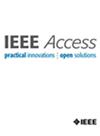Optimizing Fairness and Spectral Efficiency With Shapley-Based User Prioritization in Semantic Communication
IF 3.4
3区 计算机科学
Q2 COMPUTER SCIENCE, INFORMATION SYSTEMS
引用次数: 0
Abstract
Efficient and fair resource allocation is a critical challenge in modern semantic communication systems, particularly in scenarios where numerous users compete for limited resources. Traditional methods, such as the Hungarian algorithm and greedy allocation, primarily focus on maximizing spectral efficiency, often neglecting fairness in resource distribution. This paper introduces a Shapley value-based framework that integrates Semantic Spectral Efficiency (S-SE) with fairness-driven prioritization. By leveraging Shapley values, the framework quantifies each user’s marginal contribution to overall system performance, enabling equitable and context-aware resource allocation. Semantic similarity is embedded directly into the allocation process, allowing the proposed method to intelligently manage resources based on channel conditions and the semantic relevance of transmitted information. Experimental evaluations demonstrate the framework’s effectiveness, achieving significant improvements in fairness, as measured by Jain’s Fairness Index, without compromising spectral efficiency. The Shapley-based approach outperforms established methods, including the Hungarian algorithm, reinforcement learning algorithms like Deep Q-Network (DQN) and Proximal Policy Optimization (PPO), as well as conventional 4G and 5G resource allocation strategies. Notably, as the number of channels increases, S-SE stabilizes while fairness continues to improve, approaching optimal levels in diverse system configurations. Although the Shapley value calculation introduces a moderate increase in computational cost, this trade-off is justified by the robust balance achieved between fairness, efficiency, and overall system performance. These results highlight the potential of the proposed framework to advance next-generation wireless communication systems by prioritizing semantic relevance and equitable resource allocation.求助全文
约1分钟内获得全文
求助全文
来源期刊

IEEE Access
COMPUTER SCIENCE, INFORMATION SYSTEMSENGIN-ENGINEERING, ELECTRICAL & ELECTRONIC
CiteScore
9.80
自引率
7.70%
发文量
6673
审稿时长
6 weeks
期刊介绍:
IEEE Access® is a multidisciplinary, open access (OA), applications-oriented, all-electronic archival journal that continuously presents the results of original research or development across all of IEEE''s fields of interest.
IEEE Access will publish articles that are of high interest to readers, original, technically correct, and clearly presented. Supported by author publication charges (APC), its hallmarks are a rapid peer review and publication process with open access to all readers. Unlike IEEE''s traditional Transactions or Journals, reviews are "binary", in that reviewers will either Accept or Reject an article in the form it is submitted in order to achieve rapid turnaround. Especially encouraged are submissions on:
Multidisciplinary topics, or applications-oriented articles and negative results that do not fit within the scope of IEEE''s traditional journals.
Practical articles discussing new experiments or measurement techniques, interesting solutions to engineering.
Development of new or improved fabrication or manufacturing techniques.
Reviews or survey articles of new or evolving fields oriented to assist others in understanding the new area.
 求助内容:
求助内容: 应助结果提醒方式:
应助结果提醒方式:


